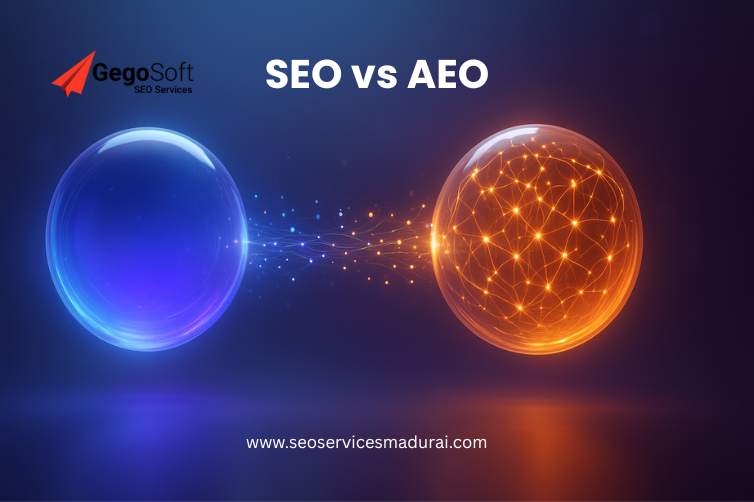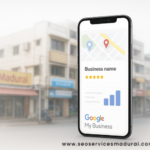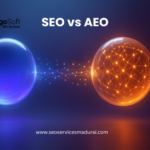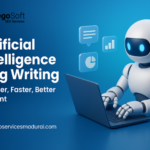The digital landscape is witnessing a fundamental shift in how users search for information. While traditional Search Engine Optimization (SEO) has dominated marketing strategies for decades, a new paradigm called Answer Engine Optimization (AEO) is rapidly gaining importance. Understanding the distinction between SEO vs AEO two approaches is crucial for businesses aiming to maintain visibility in an AI-driven search environment.
What is SEO?
SEO focuses on improving website rankings in search engine results pages (SERPs) through various techniques including keyword optimization, quality content creation, backlink building, and technical enhancements. The primary goal is to drive organic traffic by appearing prominently when users enter specific search queries into platforms like Google, Bing, or Yahoo.
Traditional SEO strategies have centered around understanding search algorithms, optimizing meta tags, improving page speed, and earning authoritative backlinks. This approach assumes users will click through to websites to find the information they need.
What is AEO?
Answer Engine Optimization represents the next evolution in search. AEO optimizes content specifically for AI-powered tools like ChatGPT, Google’s AI Overviews, Bing Chat, and voice assistants such as Alexa and Siri. Rather than driving clicks to websites, AEO aims to have your content featured as the direct answer to user queries.
The rise of conversational AI and voice search has accelerated the need for AEO. These platforms extract and synthesize information from multiple sources to provide immediate, comprehensive answers without requiring users to visit individual websites.
Key Differences Between SEO Vs AEO
User Intent: SEO targets keyword-based queries, while AEO focuses on question-based, conversational searches. Users asking “best Italian restaurants nearby” (SEO) versus “What makes a great Italian restaurant and which one should I try tonight?” (AEO) require different optimization approaches.
Content Structure: SEO emphasizes keyword density and strategic placement. AEO prioritizes structured data, clear answers, and conversational language that AI systems can easily interpret and extract.
Success Metrics: SEO measures success through rankings, click-through rates, and website traffic. AEO success is measured by answer box features, voice search responses, and AI citations, even if users never visit your site.
Technical Implementation: While SEO relies heavily on traditional HTML optimization and link building techniques, AEO requires schema markup, FAQ formatting, and content structured specifically for AI comprehension.
Why Both Matter in 2025
The misconception that AEO replaces SEO overlooks a critical reality: these strategies complement each other. Websites still need strong technical SEO foundations to be discovered and indexed by search engines before AI tools can extract their information.
Recent studies indicate that while AI-generated answers are increasing, traditional search results still drive significant traffic. Users often verify AI responses by visiting source websites, making the combination of SEO and AEO essential for comprehensive digital visibility.
Implementing a Hybrid Strategy
Start by structuring your content to answer specific questions clearly and concisely. Use headers formatted as questions (H2, H3 tags) followed by direct, authoritative answers. Implement structured data markup to help search engines and AI understand your content context.
Create FAQ sections addressing common industry questions. These naturally align with conversational search queries and increase chances of being featured in answer boxes or cited by AI tools.
Maintain strong SEO fundamentals including fast loading speeds, mobile optimization, and quality backlinks while adapting content to be more conversational and question-focused. This dual approach ensures visibility across both traditional search engines and emerging AI platforms.
The Future of Search Optimization
As AI continues to evolve, the line between SEO and AEO will blur further. Forward-thinking businesses are already adapting their content marketing strategies to serve both human searchers and AI systems simultaneously.
The key is creating genuinely valuable, authoritative content that answers user questions thoroughly. Whether that content reaches users through traditional search results or AI-generated responses becomes secondary to establishing your brand as a trusted information source.
Rather than choosing between SEO and AEO, successful digital strategies will integrate both approaches, ensuring maximum visibility regardless of how users choose to search for information in an increasingly AI-driven world.











